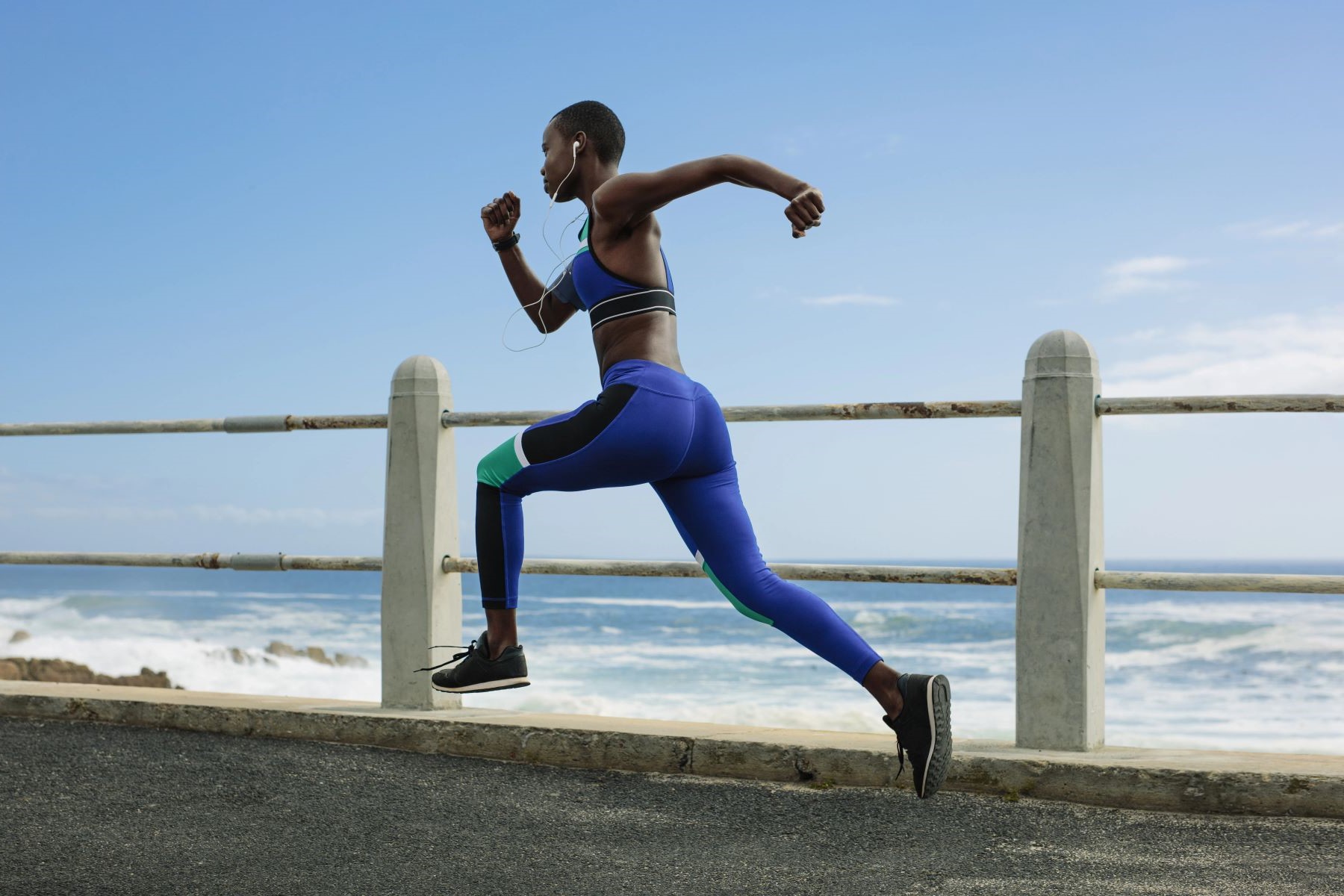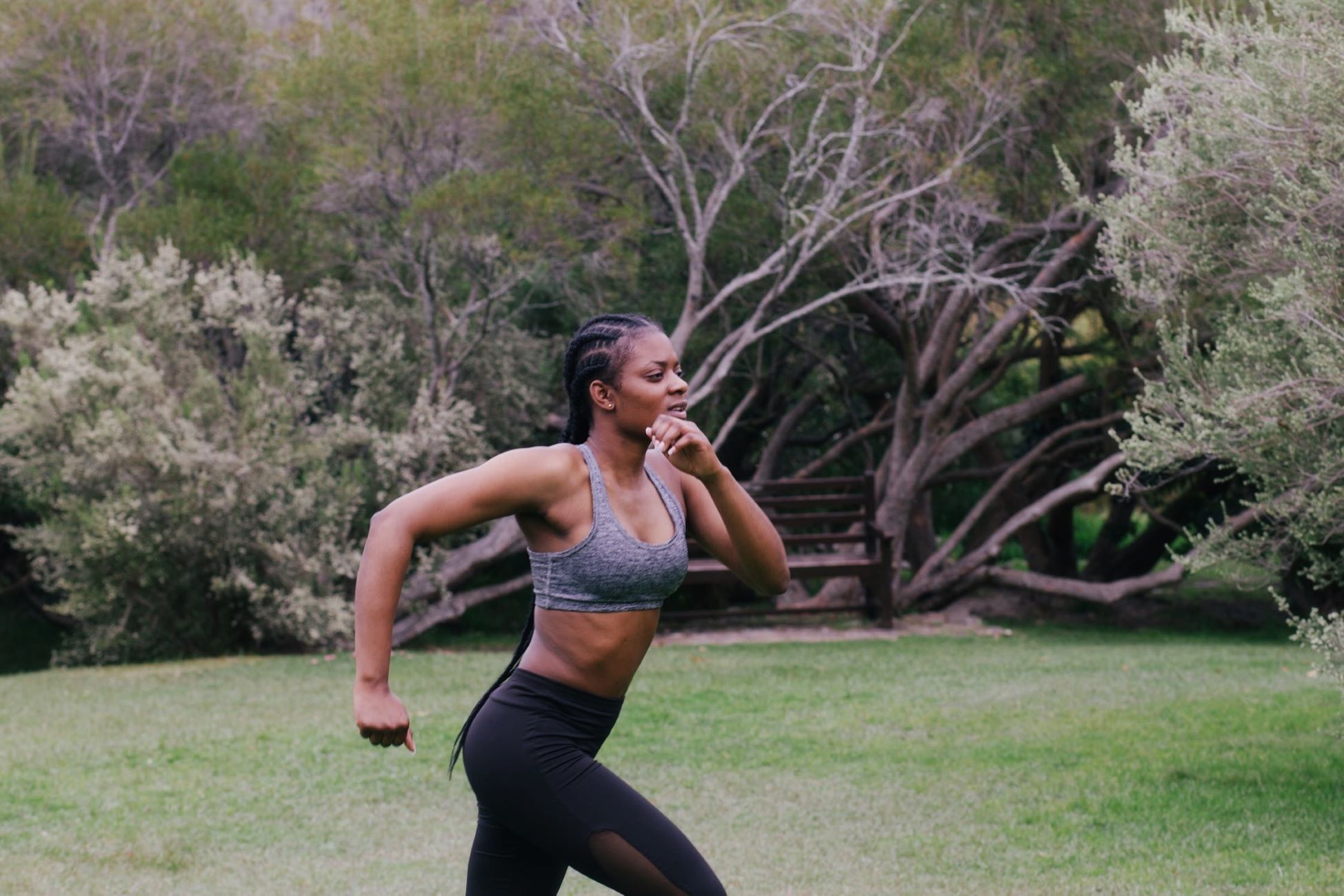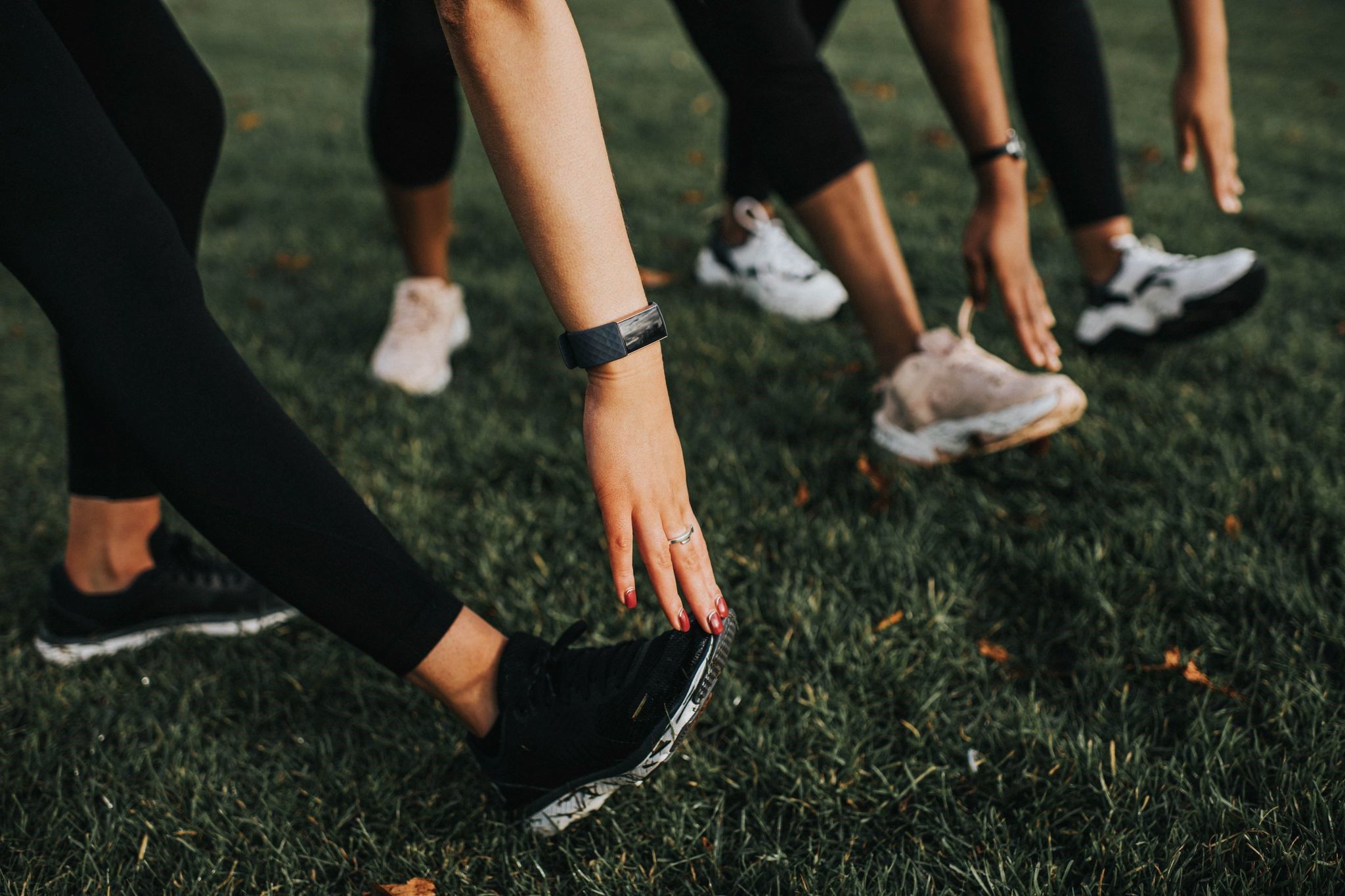Home>Health & Nutrition>The Benefits And Drawbacks Of Running In The Sun


Health & Nutrition
The Benefits And Drawbacks Of Running In The Sun
Published: February 22, 2024
Discover the impact of running in the sun on your health and nutrition. Learn about the benefits and drawbacks to make informed decisions for your fitness routine.
(Many of the links in this article redirect to a specific reviewed product. Your purchase of these products through affiliate links helps to generate commission for Therunningadvisor.com, at no extra cost. Learn more)
Table of Contents
The Importance of Sun Exposure for Runners
Sun exposure plays a crucial role in the overall well-being of runners. When runners spend time in the sun, their bodies naturally produce vitamin D, a vital nutrient that supports bone health, boosts the immune system, and enhances mood. This is particularly beneficial for runners, as strong bones are essential for withstanding the impact of running, and a robust immune system helps prevent illness that could disrupt training schedules.
Moreover, exposure to sunlight can help regulate the body's circadian rhythm, which is the internal clock that governs the sleep-wake cycle. For runners, maintaining a healthy sleep pattern is essential for optimal performance and recovery. Sunlight exposure during the day can help synchronize the body's internal clock, leading to better sleep quality at night.
In addition, sunlight exposure has been linked to improved mental well-being. The sun's rays stimulate the production of serotonin, a neurotransmitter that contributes to feelings of happiness and well-being. For runners, maintaining a positive mindset is crucial for motivation and mental resilience during challenging training sessions and races.
Furthermore, sunlight exposure has been associated with enhanced cardiovascular health. Research suggests that moderate sun exposure may help lower blood pressure and reduce the risk of heart disease, which are significant benefits for runners aiming to improve their cardiovascular fitness and endurance.
Overall, the importance of sun exposure for runners cannot be overstated. From supporting bone health and immune function to regulating sleep patterns and enhancing mental well-being, the sun offers a myriad of benefits that can significantly impact a runner's overall health and performance. However, it is essential to strike a balance and be mindful of the potential risks associated with excessive sun exposure, especially during outdoor activities like running.
Potential Risks of Running in the Sun
While sun exposure offers numerous benefits, it is crucial for runners to be aware of the potential risks associated with excessive exposure to the sun's rays. Prolonged or intense sun exposure during outdoor running sessions can lead to various health concerns, including:
1. Sunburn:
One of the most immediate risks of running in the sun is sunburn. When the skin is exposed to ultraviolet (UV) radiation for an extended period, it can become red, tender, and painful. Severe sunburn can cause blistering and peeling, leading to discomfort and potential disruption of training schedules.
2. Skin Damage:
Repeated exposure to the sun without adequate protection can contribute to long-term skin damage, including premature aging and an increased risk of skin cancer. Ultraviolet radiation can penetrate the skin, causing cellular damage and potentially leading to the development of skin cancer over time.
3. Dehydration:
Running in the sun, especially during hot weather, can accelerate fluid loss through sweat. Dehydration can impair performance, lead to fatigue, and increase the risk of heat-related illnesses such as heat exhaustion and heatstroke. It is essential for runners to stay well-hydrated and replenish fluids lost during sun-exposed runs.
Read more: The Benefits And Techniques Of Running
4. Heat-Related Illnesses:
Exercising in high temperatures can elevate the risk of heat-related illnesses, including heat cramps, heat exhaustion, and heatstroke. These conditions can be exacerbated by intense sun exposure, particularly when runners are not acclimated to the heat or fail to take adequate precautions.
5. Eye Damage:
Prolonged exposure to the sun's UV rays can potentially harm the eyes, leading to conditions such as cataracts and macular degeneration. Runners should consider wearing UV-protective sunglasses to shield their eyes from harmful radiation during sunny runs.
6. Impact on Performance:
Excessive heat and sun exposure can significantly impact a runner's performance. High temperatures can increase perceived exertion, reduce endurance, and diminish overall running performance, especially for those unaccustomed to running in hot conditions.
7. Risk of Overtraining:
In an effort to maintain training consistency, some runners may push themselves to run in the sun despite the potential risks. This can contribute to overtraining, leading to physical and mental fatigue, decreased performance, and an increased susceptibility to injuries.
By understanding and acknowledging these potential risks, runners can take proactive measures to mitigate the negative effects of sun exposure while maximizing the benefits of outdoor running. Implementing effective sun protection strategies and adopting smart running practices can help minimize the risks associated with running in the sun, allowing runners to enjoy the advantages of outdoor training while safeguarding their health and well-being.
Read more: The Benefits Of Pilates For Runners
Tips for Safe Sun Running
When it comes to running in the sun, prioritizing safety and well-being is paramount. By implementing the following tips, runners can enjoy the benefits of sun exposure while minimizing the potential risks associated with outdoor activities in sunny conditions.
1. Time Your Runs Wisely:
Plan your runs during the early morning or late afternoon to avoid the peak hours of intense sunlight. This can help reduce exposure to harmful UV rays and minimize the risk of heat-related illnesses.
2. Wear Sun-Protective Clothing:
Opt for lightweight, breathable clothing that provides adequate coverage to shield your skin from direct sun exposure. Look for UV-protective running gear, including hats, long-sleeved shirts, and sunglasses with UV protection.
3. Apply Sunscreen:
Before heading out for a run, apply a broad-spectrum sunscreen with a high SPF (Sun Protection Factor) to all exposed skin areas. Reapply sunscreen as needed, especially during longer runs or in situations where excessive sweating occurs.
4. Stay Hydrated:
Maintain proper hydration by carrying a water bottle or utilizing hydration packs during sun-exposed runs. Aim to drink fluids before, during, and after your run to replenish lost fluids and prevent dehydration.
5. Seek Shade Routes:
Plan your running routes to include shaded paths, trails, or tree-lined roads whenever possible. Running in shaded areas can help reduce direct sun exposure and lower the risk of overheating.
6. Monitor Weather Conditions:
Stay informed about the weather forecast and be mindful of temperature and humidity levels. Adjust your running plans accordingly, considering factors such as heat index and UV index to make informed decisions about sun running.
7. Listen to Your Body:
Pay attention to your body's signals and adjust your pace or distance if you start to feel overheated or fatigued. It's essential to prioritize your well-being and avoid pushing yourself beyond safe limits in sunny conditions.
Read more: The Benefits Of Self-Massage For Runners
8. Take Breaks as Needed:
If you're running in intense sunlight or high temperatures, consider incorporating brief rest breaks to cool down and rehydrate. This can help prevent overheating and reduce the risk of heat-related issues.
By incorporating these tips into your sun running routine, you can create a safer and more enjoyable outdoor running experience while reaping the benefits of sunlight exposure for your overall health and well-being. Prioritizing sun safety allows runners to embrace the advantages of outdoor training while minimizing the potential drawbacks associated with running in the sun.
Benefits of Running in the Sun
Running in the sun offers a multitude of benefits that extend beyond physical fitness, encompassing various aspects of overall health and well-being. Embracing outdoor runs under the sun's radiant glow can significantly enhance a runner's experience and contribute to their holistic wellness. Here are the compelling advantages of running in the sun:
1. Enhanced Vitamin D Production:
Exposure to sunlight stimulates the body's natural production of vitamin D, a crucial nutrient that plays a pivotal role in maintaining strong bones and supporting immune function. For runners, adequate vitamin D levels are essential for bone health, as strong and resilient bones are fundamental for enduring the impact of running and minimizing the risk of stress fractures and injuries.
2. Mood Elevation and Mental Well-Being:
Sunlight exposure triggers the release of serotonin, a neurotransmitter associated with feelings of happiness and well-being. For runners, basking in the sun's rays can uplift mood, alleviate stress, and foster a positive mindset, which is instrumental for maintaining motivation and mental resilience during challenging training sessions and races.
Read more: The Benefits Of Taking Running Supplements
3. Regulation of Circadian Rhythm:
Exposure to natural sunlight helps regulate the body's internal clock, known as the circadian rhythm. For runners, maintaining a balanced circadian rhythm is vital for optimizing sleep patterns, ensuring restorative rest, and supporting overall recovery. Synchronized exposure to sunlight during the day can contribute to improved sleep quality and better performance during training and races.
4. Cardiovascular Health Benefits:
Moderate sun exposure has been linked to potential cardiovascular benefits, including the regulation of blood pressure and the reduction of heart disease risk. These advantages are particularly significant for runners aiming to enhance their cardiovascular fitness and endurance, as a healthy cardiovascular system is essential for sustaining prolonged running efforts and promoting overall heart health.
5. Immune System Support:
Sunlight exposure can bolster the immune system, potentially reducing the risk of infections and illnesses. For runners, a robust immune system is crucial for maintaining consistent training schedules and minimizing the impact of common colds and respiratory infections, ultimately contributing to uninterrupted progress and performance improvement.
6. Psychological Well-Being:
The natural outdoor environment, coupled with sunlight exposure, can provide a sense of rejuvenation, tranquility, and connection with nature. This can lead to reduced feelings of anxiety, increased mental clarity, and an overall sense of well-being, fostering a holistic approach to health and fitness for runners.
Incorporating outdoor runs in the sunlight into a training regimen can offer a myriad of benefits that extend beyond physical fitness, encompassing mental, emotional, and physiological well-being. By embracing the advantages of running in the sun, runners can elevate their overall health, performance, and enjoyment of the sport, creating a harmonious balance between outdoor training and well-being optimization.
Drawbacks of Running in the Sun
While running in the sun offers numerous benefits, it is essential for runners to be mindful of the potential drawbacks associated with prolonged sun exposure. Understanding these drawbacks can empower runners to take proactive measures to mitigate the negative effects and safeguard their well-being. Here are the significant drawbacks of running in the sun:
-
Risk of Sunburn and Skin Damage: Prolonged exposure to the sun's ultraviolet (UV) rays can lead to sunburn, causing redness, pain, and potential blistering of the skin. Additionally, repeated sun exposure without adequate protection can contribute to long-term skin damage, including premature aging and an increased risk of skin cancer. Runners who neglect sun protection measures may inadvertently subject their skin to harmful UV radiation, leading to potential health concerns.
-
Dehydration and Heat-Related Illnesses: Running in the sun, especially during hot weather, can accelerate fluid loss through sweat, leading to dehydration. Inadequate hydration can impair performance, increase fatigue, and elevate the risk of heat-related illnesses such as heat exhaustion and heatstroke. The combination of intense sun exposure and physical exertion can exacerbate the risk of dehydration and heat-related issues, posing significant challenges to runners' well-being.
-
Impact on Performance and Recovery: Excessive heat and sun exposure can significantly impact a runner's performance and recovery. High temperatures can elevate perceived exertion, diminish endurance, and impede overall running performance, particularly for individuals unaccustomed to running in hot conditions. Furthermore, prolonged sun exposure can hamper post-run recovery, potentially prolonging the recovery period and affecting subsequent training sessions.
-
Potential Eye Damage: Prolonged exposure to the sun's UV rays can pose risks to eye health, potentially leading to conditions such as cataracts and macular degeneration. Runners who overlook the importance of UV-protective eyewear may inadvertently subject their eyes to harmful radiation, increasing the likelihood of long-term eye damage and vision-related issues.
-
Risk of Overtraining and Fatigue: In an effort to maintain training consistency, some runners may push themselves to run in the sun despite the potential risks. This can contribute to overtraining, leading to physical and mental fatigue, decreased performance, and an increased susceptibility to injuries. The combination of intense sun exposure and rigorous training can exacerbate the risk of overtraining, potentially undermining runners' overall well-being and progress.
By acknowledging these drawbacks and implementing effective sun protection strategies, runners can navigate the challenges associated with running in the sun while optimizing their outdoor training experiences. Prioritizing sun safety and well-being enables runners to strike a balance between reaping the benefits of sun exposure and mitigating the potential drawbacks, fostering a holistic approach to health and fitness in their running endeavors.
Conclusion: Finding the Balance
In the realm of running, finding the balance between harnessing the benefits of sun exposure and mitigating its potential drawbacks is paramount. As runners strive to optimize their performance, well-being, and overall training experiences, navigating the nuances of sun running becomes a pivotal aspect of their journey. It is within this delicate equilibrium that runners can truly harness the transformative power of outdoor training while safeguarding their health and vitality.
Embracing the sun's radiant energy during outdoor runs offers a myriad of advantages, from bolstering vitamin D production and enhancing mood to regulating the body's internal clock and fostering cardiovascular health. These benefits intertwine with the intrinsic allure of outdoor running, creating a harmonious synergy that transcends physical fitness and permeates various facets of holistic well-being.
However, the allure of sun running is juxtaposed with potential risks, including sunburn, dehydration, and heat-related illnesses, which can impede performance and compromise overall health. Acknowledging these risks empowers runners to adopt proactive measures, such as strategic timing of runs, sun-protective attire, and vigilant hydration practices, to mitigate the potential drawbacks and fortify their resilience against the sun's intensity.
Finding the balance in sun running necessitates a mindful integration of sun safety practices into the fabric of outdoor training. By aligning the pursuit of fitness with a steadfast commitment to well-being, runners can cultivate a holistic approach that transcends the confines of physical exertion. This approach encompasses a profound respect for the body's resilience, an unwavering dedication to health preservation, and an unyielding pursuit of performance optimization.
Ultimately, the quest for balance in sun running encapsulates the essence of mindful athleticism, where the pursuit of physical prowess converges with a deep reverence for well-being. It is a dynamic equilibrium that encapsulates the art of outdoor running, where the sun's radiance becomes a source of vitality, inspiration, and rejuvenation, harmonizing with the runner's spirit as they traverse the open pathways, embodying the essence of holistic health and well-being.










